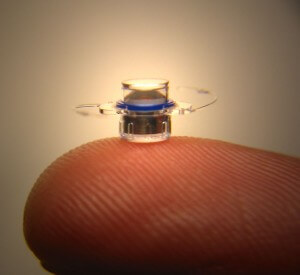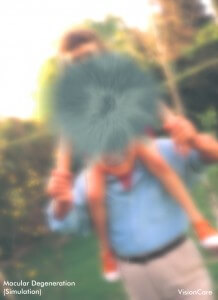Implantable Eye Telescope Brings Sight Back To The Blind

Share

For the millions of people who suffer from age-related eye degeneration, restoring sight to the blind might sound less like reality and more like a miracle. But thanks to an incredible miniature eye implant that works to restore central vision, the future's looking bright.
The macula is a part of the retina responsible for highly detailed central vision. It contains a high density of cone cells, which allow us to perceive fine detail and quick movement in our environment - for healthy individuals, that is. Patients suffering from age-related macular degeneration (AMD) partially or totally lose this functionality, resulting in a "blind spot" where their focal point normally rests. This can make it difficult to read, recognize faces, or even watch television... until now.
The Implantable Miniature Telescope, or IMT, is a tiny prosthetic implanted into the patient's eye. Rather than directing light to the damaged macula, the telescope projects the image onto a broader surface of the retina that surrounds the macula. In this way, visual information is redirected to healthy rods and cones, and can be processed in the brain as central vision.
Both central and peripheral vision are important functions of the visual system. Because of this, the IMT is only implanted into one eye of patients with macular degeneration. One eye continues to process peripheral vision normally (which is better suited for low-light vision, for example), while the implanted eye restores the central vision that was previously impaired. This allows individuals to again experience the full range of visual stimuli so necessary to everyday life. And because the implant is embedded in the iris, it goes unnoticed to others.

Be Part of the Future
Sign up to receive top stories about groundbreaking technologies and visionary thinkers from SingularityHub.


Macular degeneration primarily effects older adults, and is the leading cause of blindness in the elderly. Nearly 15 million people suffer from AMD in the United States alone. Approximately 10% of adults between the ages of 66 and 74 suffer from AMD, a figure that jumps to 30% between the ages of 75 and 85, according to The Eye Digest.
"In an end-stage AMD population, the indicated improvements in this study are substantial compared to risks of surgery," said study coauthor R. Doyle Stulting, M.D., Ph.D. "For patients with this level of visual impairment, the ability to be less dependent on others and to reclaim even a few of the activities they once enjoyed could make a real difference in their lives."
The IMT was developed by VisionCare Ophthalmic Technologies, and the implant has recently completed Phase II/III clinical trials. The tests showed that the IMT doubled the vision of 2/3 of participants' eyes (3 lines on a visual acuity chart) after one year with the implant. Some patients experienced side effects like intraocular pressure and inflammation, though these may have been related to the surgury. On March 27, an advisory panel for the Food and Drug Administration (FDA) unanimously recommended the prosthetic for approval. Barring any unforeseen events, the IMT will soon gain FDA approval and hit the market soon thereafter.
While the IMT is certainly an amazing breakthrough, it is just one of many technologies we've reported on that are overcoming blindness (such as bionic eyes and gene therapy). Besides the direct clinical application of such amazing technology, eye implants beg the question of how far these kinds of advances will go. Who knows? Maybe your grandkids will sport bionic eyes capable of zooming, night vision, and infrared perception. Regardless, anatomical prosthetics like the IMT promise to improve individuals' lives today, and lay the theoretical foundation for exciting technology to come.
Drew Halley is a graduate student researcher in Anthropology and is part of the Social Science Matrix at UC Berkeley. He is a PhD candidate in biological anthropology at UC Berkeley studying the evolution of primate brain development. His undergraduate research looked at the genetics of neurotransmission, human sexuality, and flotation tank sensory deprivation at Penn State University. He also enjoys brewing beer, photography, public science education, and dungeness crab. Drew was recommended for the Science Envoy program by UC Berkeley anthropologist/neuroscientist Terrence Deacon.
Related Articles

One Dose of This Gene Editor Could Defeat a Host of Genetic Diseases Suffered by Millions

Groundbreaking Gene Therapy Transforms Life of Boy With Devastating Disorder

Scientists Say We Need a Circular Space Economy to Avoid Trashing Orbit
What we’re reading